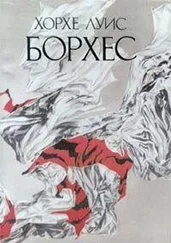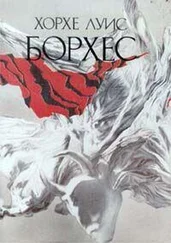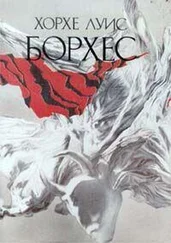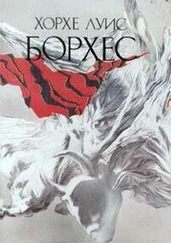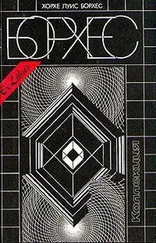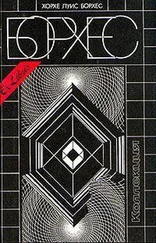Хорхе Борхес - Collected Fictions
Здесь есть возможность читать онлайн «Хорхе Борхес - Collected Fictions» весь текст электронной книги совершенно бесплатно (целиком полную версию без сокращений). В некоторых случаях можно слушать аудио, скачать через торрент в формате fb2 и присутствует краткое содержание. Год выпуска: 1999, ISBN: 1999, Издательство: Penguin (UK), Жанр: Старинная литература, на английском языке. Описание произведения, (предисловие) а так же отзывы посетителей доступны на портале библиотеки ЛибКат.
- Название:Collected Fictions
- Автор:
- Издательство:Penguin (UK)
- Жанр:
- Год:1999
- ISBN:9780140286809
- Рейтинг книги:5 / 5. Голосов: 1
-
Избранное:Добавить в избранное
- Отзывы:
-
Ваша оценка:
- 100
- 1
- 2
- 3
- 4
- 5
Collected Fictions: краткое содержание, описание и аннотация
Предлагаем к чтению аннотацию, описание, краткое содержание или предисловие (зависит от того, что написал сам автор книги «Collected Fictions»). Если вы не нашли необходимую информацию о книге — напишите в комментариях, мы постараемся отыскать её.
Collected Fictions — читать онлайн бесплатно полную книгу (весь текст) целиком
Ниже представлен текст книги, разбитый по страницам. Система сохранения места последней прочитанной страницы, позволяет с удобством читать онлайн бесплатно книгу «Collected Fictions», без необходимости каждый раз заново искать на чём Вы остановились. Поставьте закладку, и сможете в любой момент перейти на страницу, на которой закончили чтение.
Интервал:
Закладка:
THE FEIGNER OF INIQUITIES
Takumi no Kami's castle was confiscated, his family ruined and eclipsed, his name linked to execration. His retainers became Rônins.*One rumor has it that the same night the lord committed hará kiri, forty-seven of these Rônins met on the summit of a mountain, where in minute detail they planned the act that took place one year later. But the fact is that the retainers acted with well-justified delay, and at least one of their confabulations took place not on the difficult peak of a mountain, but in a chapel in a forest, an undistinguished pavilion of white-painted wood, unadorned save for the rectangular box that held a mirror.
The Rônins hungered for revenge, but revenge must have seemed unattainable. Kira Kôtsuké no Suké, the hated teacher of court etiquette, had fortified his house, and a cloud of archers and swordsmen swarmed about his palanquin. Among his retinue were incorruptible, secret spies upon whom no detail was lost, and no man did they so closely spy upon and follow as the councillor Kuranosuké, the presumed leader of the avenging Rônins. But by chance Kuranosuké discovered the surveillance, and he based his plan for vengeance upon that knowledge.
He moved to Kioto, a city unparalleled throughout the empire for the color of its autumns. He allowed himself to descend into the depths of brothels, gambling dens, and taverns. In spite of the gray hairs of his head, he consorted with prostitutes and poets, and with persons even worse. Once he was expelled from a tavern and woke up to find himself in the street, his head covered with vomit.
It happened that a Satsuma man saw this, and said, sadly yet with anger, "Is not this Oishi Kuranosuké, who was a councillor to Asano Takumino Kami, and who helped him to die yet not having the heart to avenge his lord, gives himself up to women and wine? Faithless beast! Fool and craven! Unworthy the name of a Samurai!"
And he trod on Kuranosuké's face as he slept, and spat on him. When Kôtsuké no Suké's spies reported this passivity, the courtier felt much relieved.
But things did not stop there. The councillor sent his wife and two younger children away and bought a concubine; this iniquitous act cheered the heart and relaxed the fearful prudence of his enemy, who at last dis-missed half his guards.
On one of the bitter nights of the winter of 1703, the forty-seven Rônins met in an unkempt garden on the outskirts of Yedo, near a bridge and the playing card factory. They carried the pennants and banners of their lord. Before they began the assault, they informed the inhabitants of the city that they were not raiding the town but embarking on a military mission of strict justice.
THE SCAR
Two groups attacked the palace of Kira Kôtsuké no Suké. The councillor Kuranosuké led the first, which assaulted the main gate; the second was led by the councillor's elder son, who was not yet sixteen years old and who died that night. History records the many moments of that extraordinarily lucid nightmare—the perilous, pendular descent of the rope ladders, the drum beating the signal of attack, the defenders' rush to defend, the archers posted on the rooftops, the unswerving path of the arrows toward vital organs, the porcelains dishonored by blood, the burning death that turns to ice—all the brazen and disorderly elements of death. Nine of the Rônins died; the defenders were no less brave, and they would not surrender. Shortly after midnight, all resistance ended.
Kira Kôtsuké no Suké, the ignominious cause of all that loyalty, was no-where to be found. The attackers sought him through every corner of the emotion-torn palace; they were beginning to despair of finding him, when the councillor noted that his bedclothes were still warm. Again the Rônins searched, and soon they discovered a narrow window, hidden by a bronze mirror. Below, in a gloomy courtyard, a man in white looked up at them; a trembling sword was in his right hand. When they rushed down, the man gave himself up without a fight. His forehead bore a scar—the old rubric left by Takumi no Kami's blade.
Then the bloody Rônins went down on their knees to the detested nobleman and told him that they were the former retainers of the lord of the castle of Ako, for whose death and perdition he was to blame, and they requested that he commit the suicide that befitted a samurai.
In vain did the retainers propose to the lord's servile spirit that act of self-respect. He was a man impervious to the pleas of honor; at sunrise, the officers had to slit his throat.
THE EVIDENCE
Their thirst for revenge now quenched (but without wrath, or agitation, or regret), the Rônins made their way toward the temple that sheltered the remains of their lord.
In a brass pail they carried the incredible head of Kira Kôtsuké no Suké, and they took turns watching over it. They crossed fields and provinces, in the honest light of day. Men blessed them and wept. The prince of Sendai offered them his hospitality, but they replied that their lord had been waiting for them for almost two years. At last they reached the dark sepulcher, and they offered up the head of their enemy.
The Supreme Court handed down its verdict, and it was as expected: the retainers were granted the privilege of suicide. All obeyed, some with ardent serenity, and they lie now beside their lord. Today, men and children come to the sepulcher of those faithful men to pray.
THE SATSUMA MAN
Among the pilgrims who come to the grave, there is one dusty, tired young man who must have come from a great distance. He prostrates himself before the monument to the councillor Oishi Kuranosuké and he says aloud: "When I saw you lying drunk by the roadside, at the doorstep of a whore-house in Kioto, I knew not that you were plotting to avenge your lord; and, thinking you to be a faithless man, I trampled on you and spat in your face as I passed. I have come to offer atonement." He spoke these words and then committed hará kiri.
The priest of the temple where Kuranosuké's body lay was greatly moved by the Satsuma man's courage, and he buried him by the side of the Rônins and their lord.
This is the end of the story of the forty-seven loyal retainers—except that the story has no ending, because we other men, who are perhaps not loyal yet will never entirely lose the hope that we might one day be so, shall continue to honor them with our words.*
Hakim, the Masked Dyer of Merv
For Angélica Ocampo
Unless I am mistaken, the original sources of information on Al-Moqanna, the Veiled (or, more strictly, Masked) Prophet of Khorasan, are but four: (a) the excerpts from the History of the Caliphs preserved by Bãladhun; (b) the Manual of the Giant, or Book of Precision and Revision, by the official historian of the Abbasids, Ibn Ab1 Tahfr Tarfur; (c) the Arabic codex entitled The Annihilation of the Rose, which refutes the abominable heresies of the Rosa Obscura or Rosa Secreta, which was the Prophet's holy work; and (d) several coins (without portraits) unearthed by an engineer named Andrusov on ground that had been leveled for the Trans-Caspian Railway. These coins were deposited in the Numismatic Museum in Tehran; they contain Persian distichs which summarize or correct certain passages from the Annihilation. The original Rosa has apparently been lost, since the manuscript found in 1899 and published (not without haste) by the Morgenländisches Archive was declared by Horn, and later by Sir Percy Sykes, to be apocryphal.
Читать дальшеИнтервал:
Закладка:
Похожие книги на «Collected Fictions»
Представляем Вашему вниманию похожие книги на «Collected Fictions» списком для выбора. Мы отобрали схожую по названию и смыслу литературу в надежде предоставить читателям больше вариантов отыскать новые, интересные, ещё непрочитанные произведения.
Обсуждение, отзывы о книге «Collected Fictions» и просто собственные мнения читателей. Оставьте ваши комментарии, напишите, что Вы думаете о произведении, его смысле или главных героях. Укажите что конкретно понравилось, а что нет, и почему Вы так считаете.

